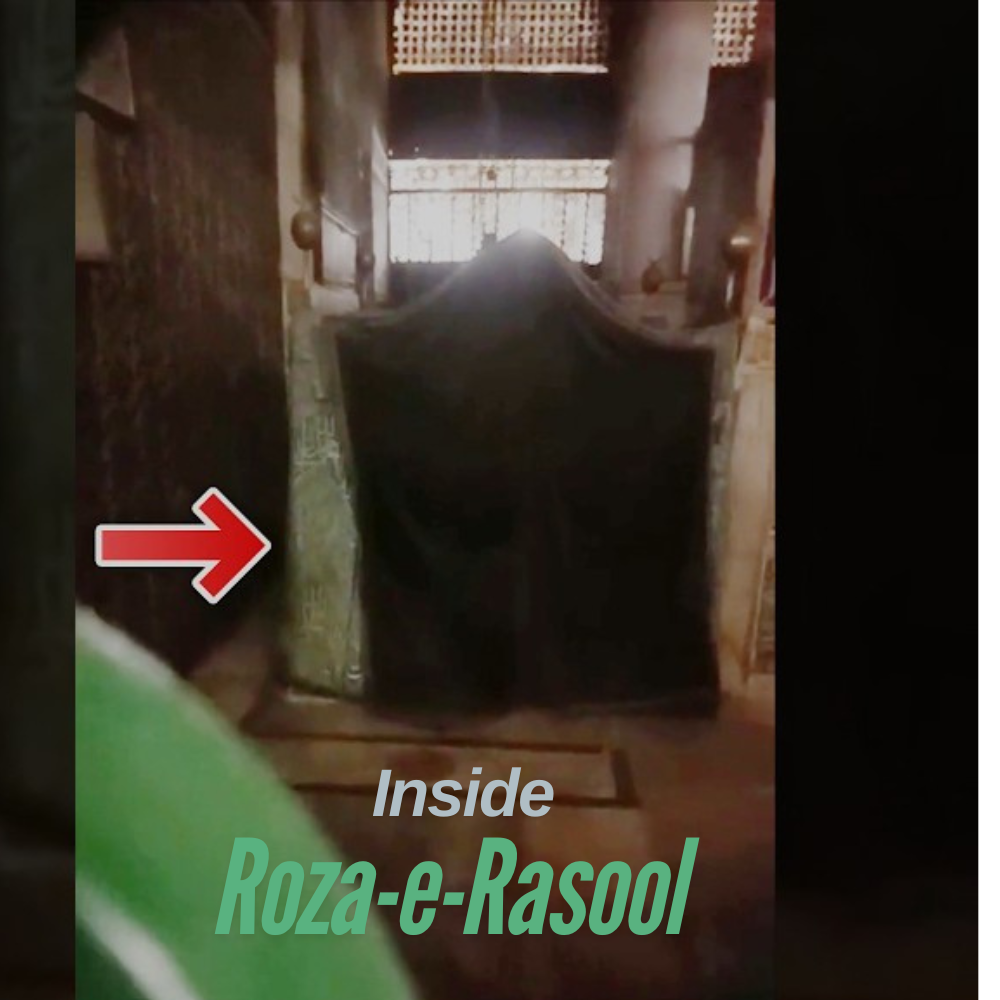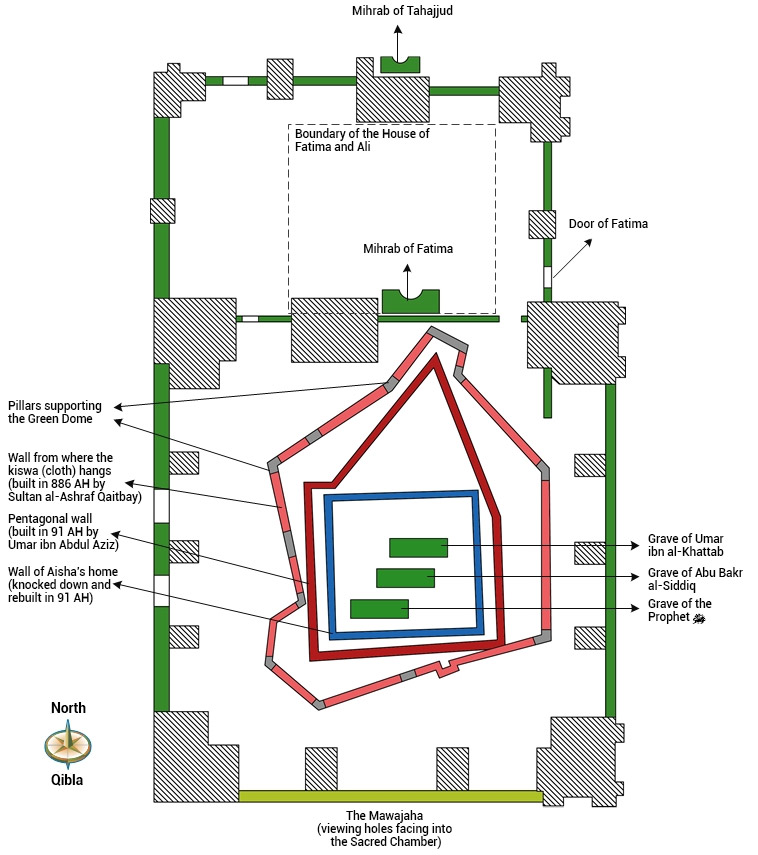

The area surrounding the resting place of Prophet Muhammad (peace be upon him) in Masjid Nabawi is shrouded in reverence and mystery. Visitors standing in front of the netting(Jaali Mubarak) in the mosque, particularly near the spots with circular marks, often find themselves in awe of what lies beyond. Here’s a glimpse into this sacred space and its historical significance.
When peering through the netting, a green cover or kiswa or Ghilaf (غلاف) is visible. This cover above the 5 side wall that is introduced by Umar bin Abdul Aziz (may Allah have mercy on him). Beyond this the 5 side wall there lies another wall and a stone dome that remains hidden from view because of green cover. This wall encloses the sacred chamber where the graves of the Prophet Muhammad (peace be upon him), Hazrat Abu Bakr (RA), and Hazrat Umar (RA) rest.
Within the Jail Sharif of Roza-e-Rasool (peace be upon him), there are two doors that allow access to the inner area. However, only one of these doors is occasionally opened, and that too for very specific individuals with special permission. Historical evidence, including old videos, shows a select few individuals entering this space in the past.
It is noteworthy that even those who have entered remain outside the green cover, The last recorded person to go inside the innermost chamber of Roza-e-Rasool was nearly 550 years ago, emphasizing the unparalleled reverence and protection accorded to this sacred site. This restriction underscores the profound respect in Islam for preserving such holy places, ensuring their sanctity remains intact for future generations.
From the outer nets, if we stand in front of Fatima RA Gate visitors may catch a glimpse of a structure that some mistakenly identify as a grave. In reality, it is a Bed and box covered with cloth and a bed, symbolizing reverence rather than an actual grave. Adjacent to this area is the Mihrabi Fatimah, where Hazrat Fatimah (RA) is said to have stood in prayer.

Privacy Policy | Terms and Conditions | Disclaimer | 2025 © Salman Naseem. All rights reserved